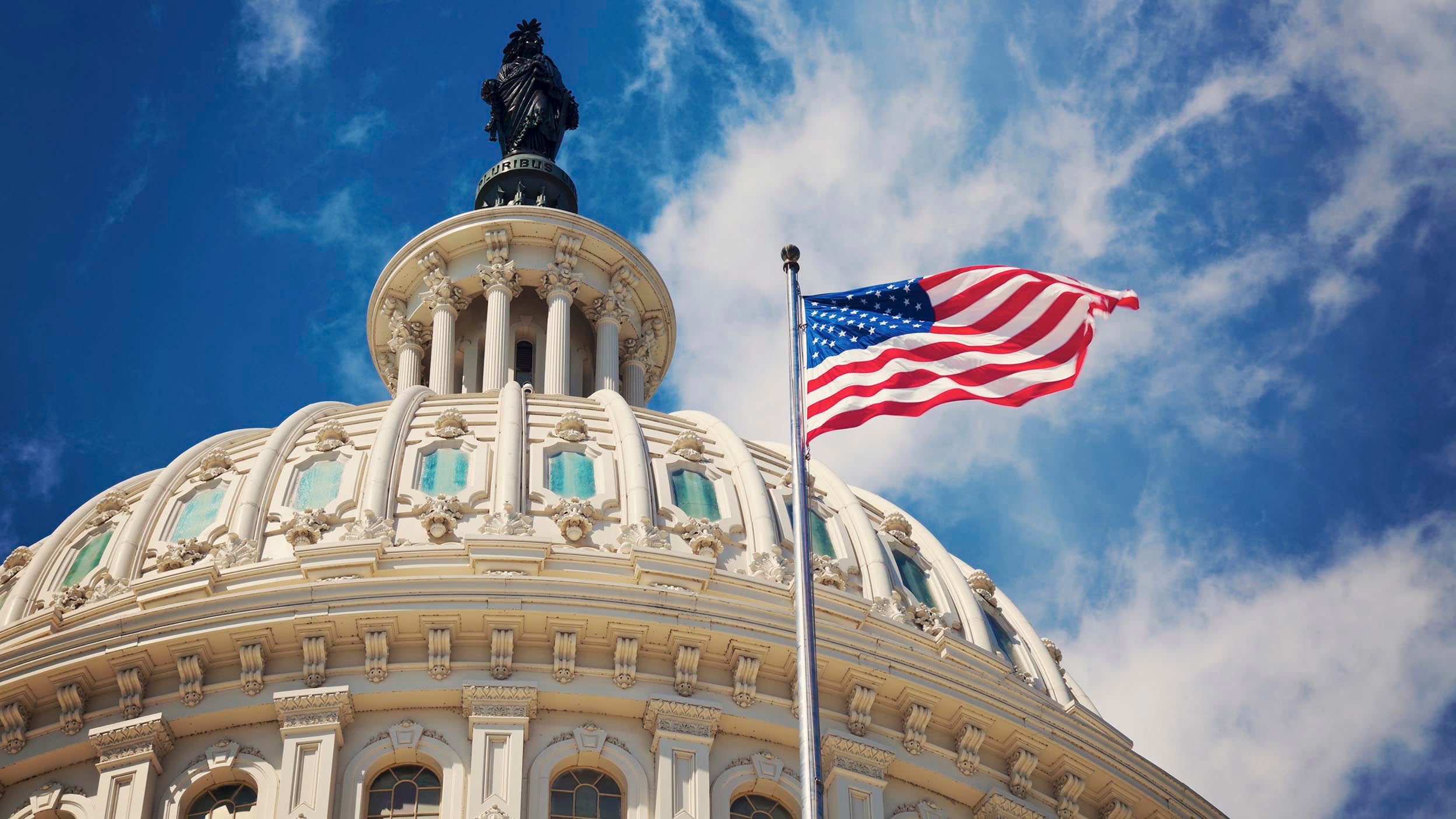
Markets and Economy Staying focused through tariff uncertainty and market jitters
With policy uncertainty rattling markets and consumer sentiment, it’s important to remember the market's long-term growth throughout its history.

While the US national debt exceeds $36 trillion, it isn't necessarily a problem for investors.
Investors probably won't lose their appetite for US Treasuries, which have been among the safest, most liquid assets in the world.
The US national debt is growing quickly, but is it really a problem? Federal debt blew past $36 trillion recently, a six-fold increase in the 21st century alone. It’s now more than 120% of the country’s gross domestic product.3 But big numbers, while eye-catching, may not point to a potential disaster or even a problem for investors. For many reasons, a day of reckoning isn’t necessarily approaching. The debt’s reality for investors and Americans in general differs from public perception.
In most years and across most administrations, the US government has spent more than it’s received in taxes, resulting in deficits. These deficits have tended to be significantly larger following recessions and crises. That’s when tax receipts decline and the government spends to stabilize the economy. The 2008 Global Financial Crisis and the 2020 pandemic resulted in unusually large deficits, which subsequently declined as the crises eased.4 It could be argued that the ability of the US government to borrow money and support its citizens during crises prevented economic downturns from becoming even more severe and long-lasting.
The more than $36 trillion current US debt is greater than the $29 trillion US nominal gross domestic product (GDP).5 Is GDP, the total value produced each year, the right metric for assessing the sustainability of US debt? The US is a very wealthy country. For example, the total US household net worth is over $160 trillion, which is close to five times the size of the nation’s debt.5 From that lens, the debt level may not seem as troubling. It may be one reason why markets generally view the nation as a good creditor.
With $36 trillion in liabilities and $200+ trillion in assets, the US federal government has far more assets than many realize.1 Rather than measuring debt as a percentage of GDP, which is primarily an income measure, measuring debt against total assets paints a far more solvent picture. If all the US government land, buildings, and natural resources were combined, the country would likely have more than $200 trillion in assets. While not all are liquid, they certainly paint the US as a much better creditor than many would believe.
Given that Treasuries are one of the safest and most liquid assets in the world, it’s unlikely investors will lose their appetite for US debt. The federal government owns 20% of US debt, making it the largest single holder.2 Since this debt is just money the government owes itself, however, it has no effect on overall government finances. More than 45% of US debt is owned by US savers, pensions, mutual funds, and financial institutions, who hold Treasuries for safety, yield, policy requirements, or regulatory reasons.2 While it’s true that more than 20% of US debt is held abroad, it’s not heavily concentrated in one country. The largest foreign investor is Japan, where yields are historically lower than they are in the US. 2
China is the second largest foreign owner of US debt, but should this concern investors in light of geopolitical tension? Probably not. There’s a notion that China could weaponize US debt by rapidly selling its US Treasury holdings, causing financial instability and a spike in borrowing costs. This risk seems unfounded, as China has been reducing its position in Treasuries for years without disrupting the US debt market.6
The US issues debt for many reasons, and theoretically, borrowed funds are put to productive use by the government. Interest expense (%) is the cost of this borrowing, and conceptually, US GDP growth (%) represents the government’s rate of return. If the rate of return (economic growth) is greater than the borrowing cost (interest expense), the US can pay down its outstanding debt.7
Aging baby boomers, one of the largest demographics in the US, were expected to put a financial strain on the country through increased medical costs. This risk hasn’t materialized. Even though a large portion of boomers have reached retirement age, Medicare spending has been much lower than anticipated.8
It’s true that the Social Security trust fund is expected to be depleted in 10 years.9 That’s not bankruptcy, however, despite what the doomsayers might say. Once the trust fund is depleted, Social Security will pay out based on what’s collected in tax revenue. The interest from the trust fund would no longer be available to pay benefits. Given payouts would then be based solely on tax revenue, it’s possible that retirees could potentially be paid less than their full benefits. The nation’s politicians, however, could always adjust the program (for example, raise the retirement age and increase the taxable maximum, to name a few) to prevent retirees from receiving less than what they’d expected.
Sources: Congressional Research Service, US Energy Information Administration, US Department of Defense, US Treasury, and Bloomberg L.P., as of 12/31/24.
Sources: Bloomberg L.P., US Treasury, 12/31/24.
Source: US Treasury, 12/31/24.
Sources: US Treasury and National Bureau of Economic Research, 12/31/24.
Sources: Bureau of Economic Analysis, 10/30/2024, and US Federal Reserve, 12/12/24. Gross domestic product (GDP) is a broad indicator of a region’s economic activity, measuring the monetary value of all the finished goods and services produced in that region over a specified period of time.
Sources: Bloomberg L.P., US Treasury, 11/30/24.
Sources: Federal Reserve Bank of St. Louis, US Bureau of Economic Analysis, Bloomberg L.P., 12/31/24.
Sources: Congressional Budget Office, St. Louis Fed, 12/31/24. Medicare spending adjusted for inflation using the Personal Consumption Expenditure Deflator, a measure of how much US households spend on goods and services.
Source: Social Security Administration, May 2024.

With policy uncertainty rattling markets and consumer sentiment, it’s important to remember the market's long-term growth throughout its history.

While the setup for markets was good coming into 2025, they’ve struggled as investors assess ongoing changes to the US policy approach.

A Purchasing Managers’ Index (PMI) tells economists and investors whether the manufacturing and services sectors are contracting or expanding.
NA4224364
Image: Henryk Sadura / Getty
The opinions referenced within are those of the author as of February 6, 2025, are based on current market conditions and are subject to change without notice. These opinions may differ from those of other Invesco investment professionals. These comments should not be construed as recommendations but as an illustration of broader themes. Forward-looking statements are not guarantees of future results. They involve risks, uncertainties, and assumptions; there can be no assurance that actual results will not differ materially from expectations.
The document contains general information only and doesn’t take into account individual objectives, taxation position, or financial needs or constitute a recommendation of the suitability of any investment strategy for a particular investor. Investors should consult a financial professional before making any investment decisions. Past performance does not guarantee future results.
This link takes you to a site not affiliated with Invesco. The site is for informational purposes only. Invesco does not guarantee nor take any responsibility for any of the content.